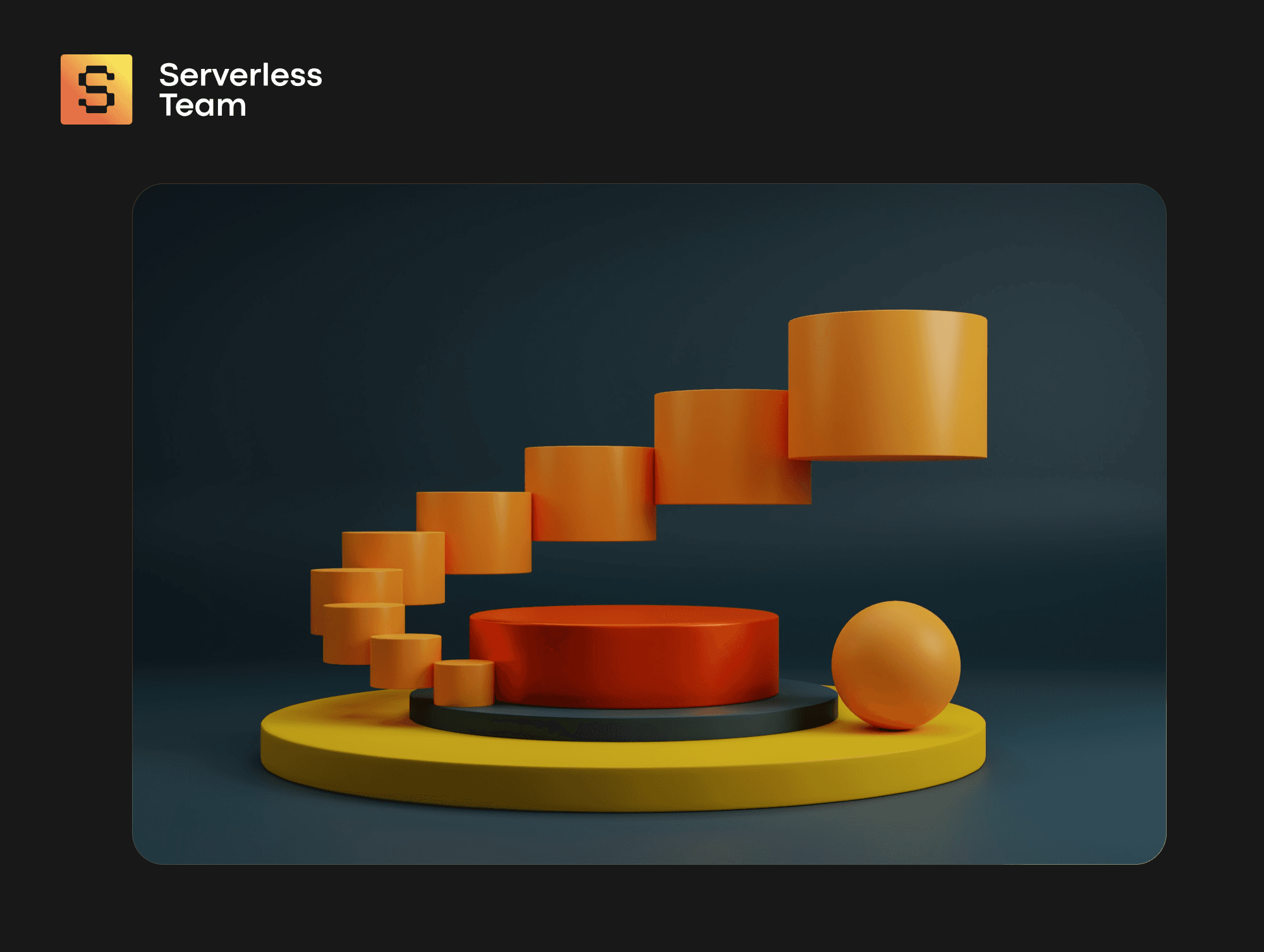With developing solutions for the Internet of Things (IoT), businesses face unique challenges when deploying and managing AWS workloads. Navigating the IoT realm can be daunting, from device connectivity issues to data security concerns. But fear not, for we're here to shed light on this crucial aspect of modern business operations.
At Serverless, we've garnered extensive experience in helping companies tackle IoT challenges effectively. Through over 200 successful , we've witnessed firsthand the transformative power of IoT when harnessed on AWS. Integrating AWS Cognito, we enhance security and user management across IoT applications, ensuring a robust and secure environment. Now, we're excited to share our insights and expertise with you.
In this article, we'll delve deep into the intricacies of deploying IoT on AWS and managing it. We'll explore the AWS IoT Device Management platform and delve into practical solutions for managing IoT devices with AWS. You'll gain a comprehensive understanding of AWS IoT solutions and learn how to deploy IoT in AWS confidently.
Our goal is to empower businesses to harness the full potential of IoT while overcoming the hurdles that often accompany it. So, if you're ready to revolutionize your business with IoT, read on and discover how AWS can be your trusted partner in this transformative journey.

We take care of serverless development so you can focus on your business
Don't want to wait for our site launch? Let's talk about your idea right now.


Designing and Planning Your IoT Workload on AWS
When it comes to deploying and managing IoT on AWS, careful planning and design are crucial. Before diving into the technical aspects, it's essential to lay a solid foundation by identifying your business requirements and choosing the right AWS services. This strategic approach ensures that your IoT deployment aligns with your objectives, scales smoothly, and remains secure.
- Identifying Business Requirements
- Define clear objectives for your IoT deployment.
- Determine the specific outcomes you want to achieve: enhancing operational efficiency, gaining real-time data insights, or improving customer experiences.
- Choosing the Right AWS Services
- Select AWS services that align with your business goals and technical needs.
- Explore core offerings like AWS IoT Core, AWS IoT Device Management, and AWS IoT Analytics.
- Ensure that the chosen services seamlessly integrate with your architecture.
- Designing IoT Architecture
- Focus on critical components, including device connectivity, data ingestion, storage, processing, and analytics.
- Ensure that data flows seamlessly within the architecture, facilitating efficient communication.
- Create a flexible structure that can support future scalability requirements.
- Planning for Security and Scalability
- Prioritize security measures for your IoT devices.
- Employ AWS IoT security features like device authentication, data encryption, and access control.
- Develop a comprehensive security strategy to protect your entire IoT ecosystem.
- Consider scalability from the outset to accommodate future growth without disruptions.
By structuring your IoT deployment around these key considerations, you'll build a strong foundation for deploying and managing IoT devices on AWS effectively. These proactive steps minimize potential roadblocks and set the stage for a successful IoT journey.

Kyrylo Kozak
CEO, Co-founderGet your project estimation!

Deploying IoT Workloads on AWS
Developing AWS IoT solutions and deploying IoT on AWS requires a systematic approach to ensure a smooth and secure implementation. Let's break it down:
I. Clear Objectives
Begin by defining specific objectives and use cases for your IoT deployment. Clearly outline what you aim to achieve to guide your implementation effectively.
II. Select Appropriate AWS Services
Choose AWS IoT Core as the central IoT service. It serves as the backbone of your IoT architecture, serving as an AWS IoT device management platform and providing data ingestion and communication capabilities. Complement AWS IoT Core with other AWS services like AWS Lambda, Amazon S3, or Amazon Kinesis, depending on your IoT application's requirements.
III. Secure Device Onboarding
Establish secure mechanisms for onboarding and authenticating IoT devices. Utilize methods such as X.509 certificates to ensure that only authorized devices can connect to your IoT ecosystem.
IV. Efficient Data Ingestion
Develop data ingestion pipelines to collect data from IoT devices. AWS IoT Core's rules engine can be used to route, filter, and process data efficiently. Implement MQTT (Message Queuing Telemetry Transport) for lightweight and reliable communication between devices and AWS services.
V. Data Storage Strategy
Choose suitable AWS storage services for IoT data. Consider factors like scalability, durability, and access requirements. Options like Amazon S3, Amazon DynamoDB, or Amazon RDS can be utilized to store and manage IoT data based on your specific needs.
VI. IoT Security Measures
Prioritize IoT security throughout your deployment. Implement data encryption in transit and at rest to protect sensitive information. Use AWS Identity and Access Management (IAM) to manage access controls and permissions. Regularly conduct security audits and stay informed about AWS IoT security best practices.
By following these steps and using all of the available AWS IoT device management services, you’ll be well-prepared to effectively deploy and manage your IoT workload on AWS. These measures ensure the successful implementation of your IoT solution and its security and scalability. As you progress, you can further optimize and refine your IoT architecture to meet evolving demands.
Managing IoT Workloads
Effectively managing your IoT workload on AWS is crucial to ensure its reliability, security, and performance. Let’s consider what tools you can use to manage your AWS workloads.
Set up Real-Time Monitoring using AWS CloudWatch
Utilize AWS CloudWatch to monitor your IoT devices and applications in real time. CloudWatch provides detailed insights into the performance and health of your IoT infrastructure. Configure CloudWatch Alarms to receive notifications when specific metrics breach predefined thresholds, allowing you to take prompt action.
Create Custom CloudWatch Metrics for Deeper Results
Customize CloudWatch metrics to capture specific IoT-related data that is critical for your use case. This enables you to gain deeper insights and tailor monitoring to your requirements. For example, you can create custom metrics for device connectivity status, message queue lengths, or sensor data.
Watch Out for Anomalies
Implement anomaly detection mechanisms using CloudWatch or specialized anomaly detection services like Amazon Lookout for Metrics. These tools can identify unusual patterns or behaviors in your IoT data. Anomalies may indicate security breaches, system failures, or performance issues that need immediate attention.
Use Dashboards for Data Visualization
Develop customized dashboards using AWS services like Amazon QuickSight or third-party tools to visualize IoT data. These dashboards help in understanding trends, identifying issues, and making data-driven decisions. Visual representations of data can simplify complex IoT telemetry and facilitate effective monitoring.
Set Up Security Monitoring
Prioritize security monitoring by setting up alerts and alarms for suspicious activities, unauthorized access attempts, or potential vulnerabilities. You will benefit from using such AWS services as AWS Identity and Access Management (IAM) and AWS Key Management Service (KMS) to strengthen the security of your IoT infrastructure.
Don’t Sleep On Cost Monitoring and Optimization
Keep an eye on your IoT-related costs using AWS Cost Explorer. It provides insights into your AWS spending and helps you optimize resource allocation. Implement cost management best practices to ensure cost-efficiency throughout your IoT deployment.
By adhering to these management practices, you can proactively monitor, secure, and optimize your IoT workload on AWS. These measures not only enhance the performance and reliability of your IoT solutions but also contribute to cost savings and effective resource utilization.
Summary
Picture your business ready to embrace the Internet of Things (IoT) but puzzled by deployment and management on AWS. AWS IoT is your ally in this journey. It scales seamlessly, secures your devices, and unlocks IoT's data-driven potential. Yet, AWS complexities may stump you.
Here's where we step in. At Serverless, we're your AWS IoT experts. We'll navigate the intricacies, ensuring your IoT deployment thrives. Contact us for a free consultation, and let's kickstart your IoT story today!





